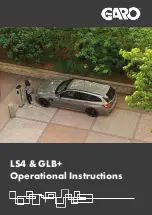
Starting the vehicle
Starting the vehicle with the Start/Stop
button
Requirements
R
The key is in the vehicle and the key battery is
not discharged.
X
Vehicles with manual transmission:
depress the clutch pedal.
X
Vehicles with automatic transmission:
shift the transmission to position
j
or
i
.
X
Depress the brake and press button
:
once.
Starting the vehicle with the key
!
Do not depress the accelerator when start-
ing the engine.
X
Vehicles with manual transmission:
depress the clutch pedal.
X
Vehicles with automatic transmission:
shift the transmission to position
j
or
i
.
X
Turn the key to position
2
in the ignition
lock.
The
%
preglow indicator lamp in the instru-
ment cluster lights up briefly.
X
Once the
%
preglow indicator lamp goes
out, turn the key to position
3
in the ignition
lock and release it as soon as the engine is
running.
Information on Hill Start Assist
Hill Start Assist holds the vehicle when pulling
away uphill under the following circumstances:
R
Vehicles with manual transmission: a gear
is engaged.
R
Vehicles with automatic transmission: the
transmission is in position
h
or
k
.
R
The parking brake is released
G
WARNING
After a while, hill start assist no longer holds
the vehicle and it may roll away. There is a risk
of an accident and injury.
Therefore, quickly move your foot from the
brake pedal to the accelerator pedal. Never
leave the vehicle when it is held by hill start
assist.
Running-in notes
Protect the engine during the first 1600 km by:
R
driving at varying road and engine speeds.
R
shifting to the next gear up when or before the
rev counter needle is
Ô
of the way to the red
area.
R
avoiding stress on the vehicle such as driving
at full throttle.
R
after 1600 km, gradually increase the engine
speed and accelerate the vehicle up to full
speed.
R
Vehicles with automatic transmission:
-
not shifting manually to a lower gear to
brake.
-
not using kickdown.
This also applies if the engine or parts of the
drive train have been renewed.
Also observe the following running-in notes:
R
in certain driving and driving safety systems,
the sensor system adjusts automatically
while a certain distance is being driven after
the vehicle has been delivered or after
repairs. Full system effectiveness is not
reached until the end of this teach-in proce-
dure.
R
new or exchanged brake pads/linings, brake
discs and tyres only provide optimal braking
and adhesion after several hundred kilome-
tres. Compensate for the reduced braking
Driving
95
Driving
and
parking
Z
















































